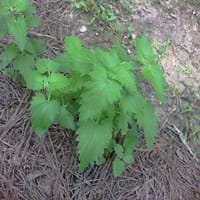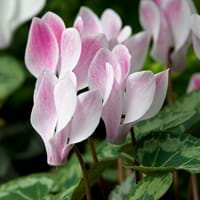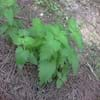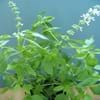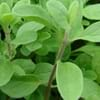Life Span
Perennial
Perennial
Type
Herbs
Flowering Plants, Tubers
Origin
Europe, Asia
Europe, Mediterranean Basin, Middle East, North Africa, Somalia
Types
Not Available
Cyclamen Africanum, Cyclamen Alpinum, Cyclamen Cilicium, Cyclamen Coum
Number of Varieties
Not Available
Habitat
Dry areas, Roadsides, stream banks, Stream side, Waste areas
Alpine Meadows, Rocky areas, Woods
USDA Hardiness Zone
3-7
5-9
Sunset Zone
1a, 1b, 2a, 2b, 3a, 3b, 4, 5, 6, 7, 8, 9, 10, 11, 12, 13, 14, 15, 16, 17, 18, 19, 20, 21, 22, 23, 24
15, 16, 17, 18, 19, 20, 21, 22, 23, 24
Habit
Clump-Forming
Clump-Forming
Flower Color
White, Lavender
Pink, Purple, White
Flower Color Modifier
Bicolor
Not Available
Fruit Color
Sandy Brown
Brown
Leaf Color in Spring
Gray Green, Gray
Several shades of Green
Leaf Color in Summer
Gray Green, Gray
Not Available
Leaf Color in Fall
Gray Green, Gray
Green, Silver
Leaf Color in Winter
Light Green
Green, Silver
Leaf Shape
Arrowhead
Heart-shaped
Plant Season
Spring, Summer, Fall
Autumn, Spring, Summer, Winter
Sunlight
Full Sun, Partial Sun
Indirect sunlight
Type of Soil
Clay, Loam, Sand
Clay, Sandy, Well drained
The pH of Soil
Acidic, Neutral, Alkaline
Acidic
Soil Drainage
Well drained
Well drained
Bloom Time
Summer, Late Summer, Early Fall
Autumn, Spring, Summer
Tolerances
Drought, Dry soil
Not Available
Where to Plant?
Container, Ground
Container, Ground, Pot
How to Plant?
Seedlings
From bulbs, Seedlings
Plant Maintenance
Low
Medium
Watering Requirements
Do Not over Water, Never Over-water, Requires regular watering, Water when soil is dry
Do not water frequently, It cannot sustain wet-feet, Keep the ground moist but not water-logged, Prefer drip-irrigation instead of Over-head watering, Water when soil is dry
In Summer
Lots of watering
Lots of watering
In Spring
Moderate
Moderate
In Winter
Average Water
Average Water
Soil pH
Acidic, Neutral, Alkaline
Acidic
Soil Type
Clay, Loam, Sand
Clay, Sandy, Well drained
Soil Drainage Capacity
Well drained
Well drained
Sun Exposure
Full Sun, Partial Sun
Indirect sunlight
Pruning
Prune if you want to improve plant shape, Prune in spring, Remove damaged leaves, Remove dead leaves
Cut or pinch the stems, Prune if you want to improve plant shape, Prune ocassionally, Prune to control growth, Prune when plant is dormant, Remove dead leaves, Remove dead or diseased plant parts
Fertilizers
fertilize every 2-3 weeks while growing, fertilize in growing season
All-Purpose Liquid Fertilizer
Pests and Diseases
Caterpillars, Leaf Hoppers, Nematodes, Spider mites
Aphids, Botrytis Cinerea, Gray mold, Mice, Mites, Root weevil, Slugs, Snails, Squirrels
Plant Tolerance
Drought, Frost
Drought
Flower Petal Number
Single
Single
Fragrant Bark/Stem
Yes
No
Foliage Texture
Medium
Medium
Foliage Sheen
Matte
Matte
Attracts
Flying insects, Insects, Spider Mites
Not Available
Allergy
Avoid during Pregnancy, Headache, Stomach pain, Vomiting
Respiratory problems
Aesthetic Uses
Beautification, Landscape Designing, Showy Purposes
Showy Purposes
Beauty Benefits
Not Available
Not Available
Environmental Uses
Air purification
Air purification
Medicinal Uses
Arthritis, Cold, constipation, Fever, Insomia, Migraines, Upset stomach
Digestive disorders, Menstrual Disorders
Part of Plant Used
Whole plant
Root, Stem
Other Uses
Air freshner, Decoration Purposes, Employed in herbal medicine, Making Perfumes, Making Shampoo, Making Sweet Scented Oil, Medicinal oil, Used as Ornamental plant, Used for its medicinal properties
Showy Purposes, Used as an ointment
Used As Indoor Plant
Yes
Yes
Used As Outdoor Plant
Yes
Yes
Garden Design
Container, Herb / Vegetable, Mixed Border
Not Available
Botanical Name
NEPETA cataria
Cyclamen Persicum
Common Name
Cat Nip, Catnip
Cyclamen or Florist's Cyclamen
In German
Katzenminze
Zyklamen
In French
cataire
Cyclamen
In Spanish
Catnip
Ciclamen
In Greek
Είδος δυόσμου
κυκλάμινο
In Portuguese
catnip
Cíclame
In Polish
Kocimiętka
Cyklamen
In Latin
catnip
Cyclamīnos
Phylum
Magnoliophyta
Anthophyta
Class
Magnoliopsida
Dicotyledonae
Family
Lamiaceae
Primulaceae
Clade
Angiosperms, Asterids, Eudicots
Not Available
Tribe
Mentheae
Cyclamineae
Subfamily
Nepetoideae
Myrsinoideae
Season and Care of Catnip and Cyclamen
Season and care of Catnip and Cyclamen is important to know. While considering everything about Catnip and Cyclamen Care, growing season is an essential factor. Catnip season is Spring, Summer and Fall and Cyclamen season is Spring, Summer and Fall. The type of soil for Catnip is Clay, Loam, Sand and for Cyclamen is Clay, Sandy, Well drained while the PH of soil for Catnip is Acidic, Neutral, Alkaline and for Cyclamen is Acidic.
Catnip and Cyclamen Physical Information
Catnip and Cyclamen physical information is very important for comparison. Catnip height is 980.00 cm and width 60.00 cm whereas Cyclamen height is 0.54 cm and width 0.75 cm. The color specification of Catnip and Cyclamen are as follows:
Catnip flower color: White and Lavender
Catnip leaf color: Gray Green and Gray
Cyclamen flower color: Pink, Purple and White
- Cyclamen leaf color: Several shades of Green
Care of Catnip and Cyclamen
Care of Catnip and Cyclamen include pruning, fertilizers, watering etc. Catnip pruning is done Prune if you want to improve plant shape, Prune in spring, Remove damaged leaves and Remove dead leaves and Cyclamen pruning is done Cut or pinch the stems, Prune if you want to improve plant shape, Prune ocassionally, Prune to control growth, Prune when plant is dormant, Remove dead leaves and Remove dead or diseased plant parts. In summer Catnip needs Lots of watering and in winter, it needs Average Water. Whereas, in summer Cyclamen needs Lots of watering and in winter, it needs Average Water.
